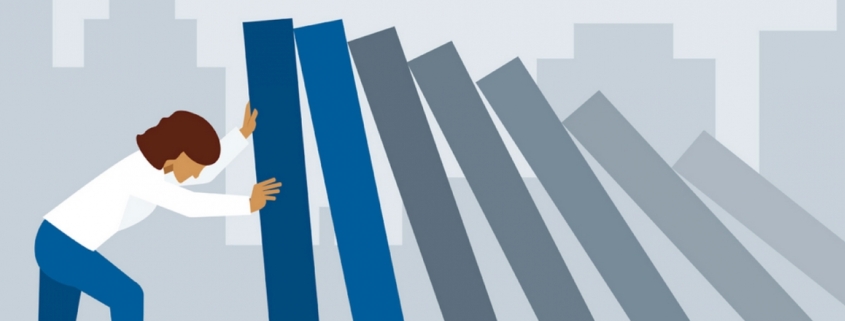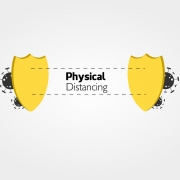Building Everlasting Resilience
Over the last decade, a complex web of economic, social, political, and environmental crises has challenged the conventional laws of organisational physics, calling into question our resilience and relentless pursuit of operational efficiency. As a result, many leaders who spent their careers operating and investing in relative stability were caught off-guard, and many enterprises may not have survived the Great Recession or the Covid-19 pandemic without massive government support.
However, in our research, we have discovered a category of family businesses that are naturally more resilient — those who understand the existential need for sustained investment in organisational agility, even at the expense of efficiency and profitability. Their unique approach to managing risk provides an innovative playbook for leaders everywhere as we enter what everybody is calling a new Age of Uncertainty.
Many of these families have operated for decades and even centuries in emerging and frontier markets, where uncertainty is the rule rather than the exception. In these more volatile environments, threats to property and security are more pervasive, access to capital more limited, corruption more rampant, supply chains more fragile, planning horizons much shorter, and talent harder to find. This is in addition to the familiar organizational challenges that all businesses must manage in terms of operations, finances, marketing, and leadership.
Over the last eight years, thorough research has been documented on how enterprising families survive and even thrive in the face of these chronically-elevated risks. What follows are three simple lessons that we’ve seen families deploy successfully that can help all leaders cope with the sustained uncertainty that lies ahead.
Resilience requires intention
Family businesses that operate in more volatile conditions understand and anticipate that tomorrow could be materially different than today. In these environments, public markets and institutions are often weaker, less efficient, and more opaque. There is a natural scarcity of capital, resources, and talent, since all three prefer the predictability that comes with the rule of law, freedom of information, and reliable infrastructure. Family leaders can wake up one morning to discover that their companies have been nationalized, or their profits regulated, or that their work force is facing sniper-fire on their daily commute.
Having the foresight to anticipate and plan for such volatility requires a fundamental shift in organizational design — treating operational inefficiency as a feature, not a bug. I’ve observed that family enterprises who thrive under these conditions follow the wise advice of the Stoic philosopher Epictetus that “Neither should a ship rely on one small anchor, nor should life rest on a single hope.” Their managerial mantra is “just-in-case” rather than “just-in-time.” Consequently, they actively invest in organizational redundancy — frequently observed in resilient biological systems — to ensure that they can bounce back quickly from adverse shocks and sustain operations whenever they lose access to critical capital and infrastructure.
Consider the example of a Middle Eastern family that built back-up manufacturing facilities and an entire residential neighbourhood in a nearby country in anticipation of a devastating civil war. Or the Haitian hotel operator who invested in backup generators for their backup generators and multiple internet connections to cope with persistent blackouts and network failures. Or the Japanese soya sauce manufacturer who rescued the local community from famine countless times over the centuries by sharing the company’s strategic grain reserves — earning cherished access to the Imperial Court. Or the Hong Kong family that built an expensive offshore nest egg in Canada as a hedge against rising regulatory risks to their Chinese operating business.
Though each of these investments in redundancy required substantial time and resources — precious commodities for any organization — being intentional about foregoing profits to build resilience helped these families prepare for, withstand, and recover from serious disruptions and chronic stress. Like keeping a spare tire and a jack in the trunk of the car, these adaptations become a form of continuity insurance and are particularly valuable in uncertain environments, despite their additional cost. As the old military saying goes: “Two is one, and one is none.” In other words, always have a back-up plan.
In contrast, many leaders who have spent their careers operating in relatively stable markets often view these investments as wasteful or inefficient — until they are blindsided by Black Swan events like the recent conflict in Ukraine and are forced to reimagine their global supply chains, foreign currency exposure, and interest rate risk. After all, when conditions are relatively predictable — as they have been for most of the last half-century in the world’s most advanced industrialized economies — optimizing for efficiency can be one of the most reliable drivers of profitability and prosperity, so it’s no surprise that this strategy has become ubiquitous even if it is short-sighted.
Consequently, effective leaders in the Age of Uncertainty need to be more intentional about investing in resilience — paying the “tax” of organizational inefficiency to help prepare for the broad array of risks that lie ahead.
Resilience is a systems-level challenge
For many leaders operating in more stable developed markets, the last few years have been a painful reminder that our external context can’t be fully controlled, and many outcomes can’t be reliably predicted, despite our best efforts. These investments must extend beyond internal structures and processes and project outwardly beyond the enterprise — aligning with broader efforts to support social and environmental resilience.
In the Age of Uncertainty, enterprising families need to understand that their long-term health and continuity is even more dependent on the ecosystems within which they are embedded — a form of symbiosis often observed in resilient biological systems. As in nature, neglecting or failing to adequately support the health and development of all their key stakeholders only undermines their own resilience. In other words, retreating behind the castle walls and hoping for the world to set itself straight is not a durable strategy for surviving a political revolution or an environmental catastrophe.
Once again, all family leaders should take inspiration from their peers in developing markets who have seen this all before. These resilient family enterprises are more inclined than their peers to invest in and care for their communities, in many cases funding critical infrastructure when public institutions fail to do so. Some of our client families have built roads, bridges, hospitals, schools, community centers, housing, news agencies, and even telecommunications grids, in the absence of government investment in these critical public goods. This not only fosters a loyal and trustworthy source of local labor, but also increases the likelihood of long-term success as norms of reciprocity emerge to sustain and expand the healthy ecosystem. In contrast, when companies and citizens don’t have reliable access to these resources, or they are willfully undermined by populism and campaigns of misinformation, trust in third parties is diminished, transactional costs increase, and the economic machine inevitably slows down.
Additionally, any efforts to invest in systemic resilience must also extend inwardly — by nurturing the familial and personal resilience of internal stakeholders. Chronic uncertainty generates a particular type of psychological distress that can significantly affect the wellbeing and performance of individuals and teams. Family business leaders who are dealing with this issue for the first time should draw wisdom from the vast literature on managing prolonged stress both personally, within families, and organisationally. They must also acknowledge that not all family members and business leaders will have the same exposure to risk, or cope with stress the same way. Finally, they should take comfort in the natural resilience of their peers in emerging and frontier markets, where strong family ties are often a powerful source of both individual and collective wellbeing.
Family matters
Extended kinship networks have been the dominant socioeconomic unit since the earliest human civilizations first emerged. Our primate DNA enabled and even encouraged us to form deep relationships with genetic strangers beyond our own kin to better manage resource scarcity and existential threat — sustaining the first durable micro-climates of trust. Bad actors in this context were quickly expelled from the extended family and left to navigate a sea of uncertainty on their own, while the increased chances of survival and growth for those who remained help to reinforce norms around trust and reciprocity.
Many echoes of this ancient tribal orientation persist in emerging markets today — from guanxi in China and blat in Russia, to wasta in the Middle East and compadrazgo in Latin America. In these countries, webs of familial connection help lower the frictional costs of doing business and provide an essential lubricant for the economy — conditions we have historically taken for granted in the developed world, where institutions like the judicial system and free press are (mostly) reliable and ensure that others will (mostly) follow the rules. As public institutions around the world continue to be undermined by populism, campaigns of misinformation, and budgetary constraint, family leaders will need to increase their strategic use of familial networks to ensure continued access to capital and opportunity. In short, the Age of Uncertainty will demand a fresh approach to continuity planning — one that extends beyond the conventional strategy, operations, and leadership frameworks taught in every business school and deployed in every boardroom. To succeed, families will also need to make deliberate investments to better prepare for, withstand, and recover from frequent shocks and chronic stress, develop a systems-level view of risk that considers both outward and inward resilience, and nurture deep familial ties to local communities to help sustain an oasis of stability amidst the chaos. Despite the inherent inefficiency and material cost of these investments, in uncertain environments like the ones that lie ahead, it will be much wiser to have them and not need them, then to need them and not have them.
Given our current situation knowing that your colleagues or employees are best suited for this new scenario we find ourselves in. Finding the right talent, the best fit for the job and your organisation can be a very challenging task. It is now important to find out whether your managers or your team is well-equipped of working together from various locations. It requires deep knowledge of their personalities, strengths, weaknesses, interests, work style and other characteristics. Our technology and solutions will do the work for you, helping you discover if your people are resilient during times of hardship, if they are autonomous, if they are team players, without actual human contact. Given that our platform is cloud-based, everyone can use it from home as well. Humanity finds itself at a crossroad for various reasons now, why not help people discover and develop themselves from the comfort of their own homes?
Request a free demo:

Sources:
https://hbr.org/2021/01/the-secret-to-building-resilience
https://hbr.org/2016/06/resilience-is-about-how-you-recharge-not-how-you-endure
https://hbr.org/2022/09/building-resilience-into-your-family-business











